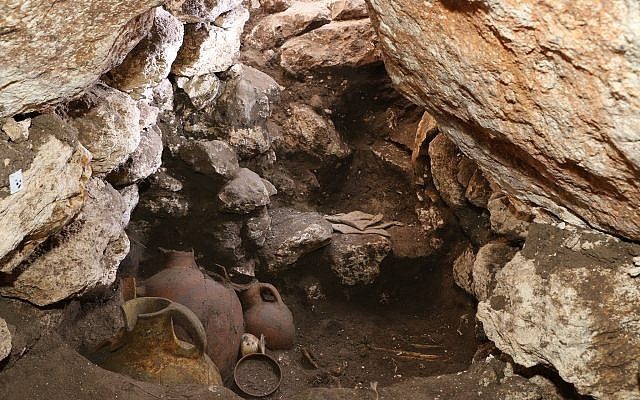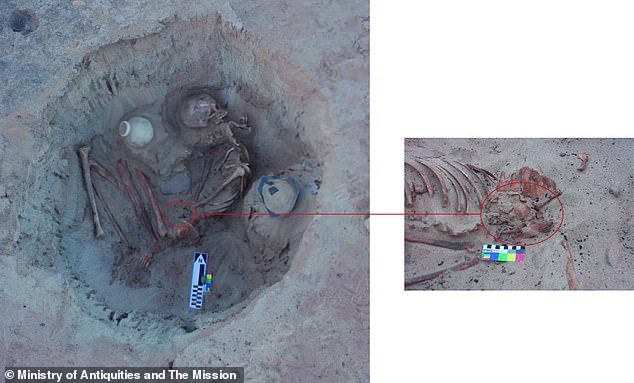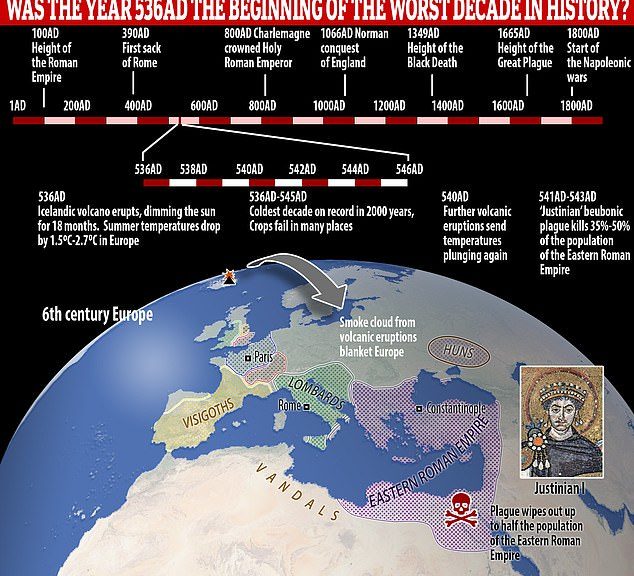OF THE
TIMES



Until that point in time, the Britons had held control of post-Roman Britain, keeping the Anglo-Saxons isolated and suppressed. After the Romans were gone, the Britons maintained the status quo, living in towns, with elected officials, and carrying on trade with the empire. After AD 536, the year reported as the "death of Arthur", the Britons, the ancient Cymric empire that at one time had stretched from Cornwall in the south to Strathclyde in the north, all but disappeared, and were replaced by Anglo-Saxons. There is much debate among scholars as to whether the Anglo-Saxons killed all of the Britons, or assimilated them. Here we must consider that they were victims of possibly many overhead cometary explosions which wiped out most of the population of Europe, plunging it into the Dark Ages which were, apparently, really DARK, atmospherically speaking.And the Vikings were likely beneficiaries of the warm period that followed:
The Little Ice Age followed a period known as the "Medieval Maximum" that is dated to between 900 AD - 1280 AD, which copious records reveal was much warmer than modern times. For instance, grapevines grew in the area of today's shivering Wales! This was generally a period of prosperity for civilizations. There was a large increase in world population and an era of colonial expansion. During the years 800 AD - 1200 AD, Greenland and Iceland were settled by the Vikings.See also:
As I pointed out in Witches, Comets and Planetary Cataclysms the falsification of history that Fomenko has clearly identified occurred at the end of 300 years of disaster piled on disaster beginning with the decimation of the population of Europe by the Black Death. This certainly fits Zinoviev's model that, at a certain point, the old, distorted representation of history no longer serves and a new legitimation of authority is required to restore peace and keep the masses under control. What Fomenko notes is that the temporal and spatial parameters of much later times were imposed on the stories of the more distant past, but that does not entirely invalidate those stories; it just means that things were re-established and what was familiar to the 'trained specialists' was utilized to give the new view of the past a more realistic 'feel'.See also:

540: Cometary bombardment (according to the Chinese historical record); Gildas reports cometary bombardment up in the northern regions of the U.K.; there was a collapse of the great dam of Mareb in Yemen, the country of Sheba...so that was an interesting year, 540...and that's just a snippet. Check out the show for all the gory details.
541: The plague began in Egypt; there was a comet in Gaul; earthquake occurred in Kyzicus...there was a comet, there was drought, earthquake, earthquake, blah-blah-blah...so I'm getting this from all these different chroniclers...
542, the sun appeared at noon day...plague began in the east...
543: Plague in Mesopotamia...
544: Plague in Italy, southern France, Spain...
545: Plague in Persia; famine; plague (Mesopotamia 546)...
547: Tremendous thunder and lightning...
549: Flood in Cilicia; plague in the British territories (according to the Bishop of Llandaff)...
551: Another Beirut earthquake and tsunami; earthquake over the Middle East; "the sea retreats" (John Malalus)...
553: Earthquake, terrible thunder, and lightning (from Chronicle of Theophanes)...
554: Earthquake in Constantinople; the destruction of Baalbek (now that's interesting...wait till you read the next book and hear about Baalbek--that's very, very interesting)...
555: There's another earthquake in Constantinople and plague...
556: Famine [in] Constantinople, plague, ashes fell from the sky...
Comment: The similarities with Homo sapiens may go some way to explaining the interbreeding that occurred, to the extent that those of Eurasian ancestry inherited between 1-4% of their DNA from Neanderthals.
See also: